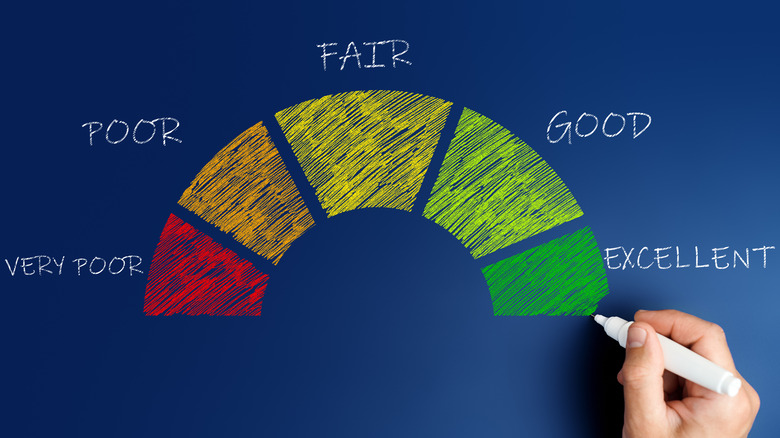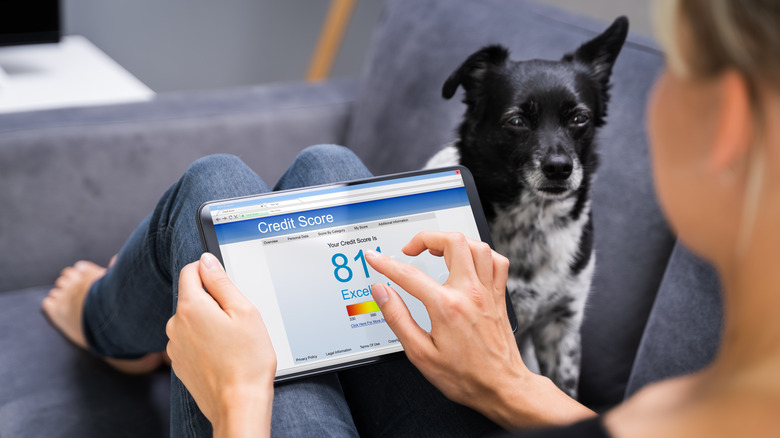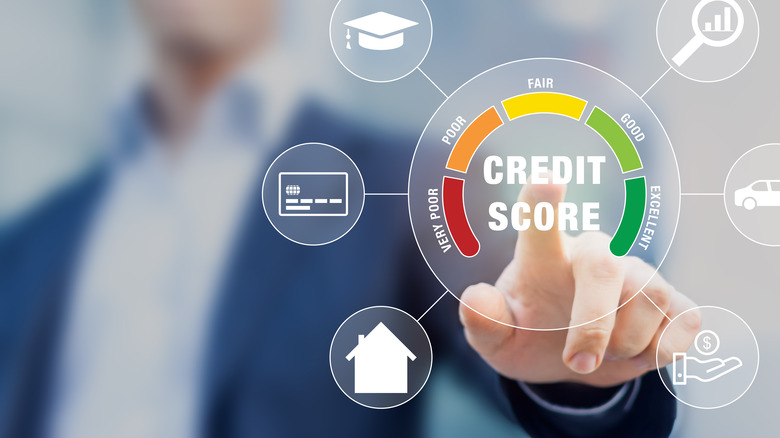What's The Highest Possible Credit Score And How Can You Get It?
If you're applying for a loan to help you pay for your education, a new vehicle, or for a house, then chances are you'll have your credit score looked over with a fine-toothed comb before you're approved. Your credit score essentially lets lenders know how likely it is that you'll be able to pay back the loan you're given. The higher your score, the better it looks to potential financial lenders.
There are a number of factors that affect your credit score, both positively and negatively. First and foremost, 35% of your score is determined by whether or not you're making your credit payments on time. Next is your credit utilization rate, which comprises 30% of your total credit score. This balances how much of your credit you're actually utilizing compared to what your credit limit is. Those are the two largest factors that help to determine your overall credit score.
However, they're not the whole picture when it comes to your final score. To round it out, 15% is based on how long you've had credit and 10% factors in how frequently you start up new accounts or even apply for new lines of credit. Finally, the last 10% is established by the variety of credit you have, such as credit cards, mortgage loans, car loans, and so forth. Now let's take a look at the breakdown of the credit score values and how you can achieve the highest possible outcome.
How to achieve the highest credit score
Now that you're aware of how your credit score is measured, let's find out the scoring system and how you can get the best results possible. When you look up your own personal credit score, you'll notice you're assigned a three-digit number representing your rating. This number system ranges from 300 to 850. The Fair Isaac Corporation — or FICO — was responsible for determining this credit rating system, which uses the various factors mentioned earlier in order to determine whether or not you're considered a risk when it comes to future loan opportunities.
The FICO scoring system is further broken down into five possible categories. A credit score of between 300 and 579 would label you as a "very poor" candidate for future credit. At 580 to 669, you'd be considered "fair," and a score of 670 to 739 would place you in the "good" category. For the upper echelon of credit ratings, between 740 and 799, you'd be considered "very good," whereas an 800 to 850 would earn you the top score — an "exceptional" credit score.
In order to achieve a top credit score, you need to be able to pay your credit loan debts on time, balance your credit spent versus your available credit carefully, have a line of credit for a longer period of time, and make certain that you have a nice variety of credit.
Here are the upsides of a high credit score
Unfortunately, having a lower credit score could make it more difficult to obtain more credit or certain loans when you need them. However, luckily, credit scores are always fluctuating so you're able to earn a higher credit score by positively improving your spending habits and by paying off the credit you have on time. Once you have a higher credit score, you might find that there are many benefits available to you.
Not only can having a higher credit score increase your chances of obtaining more credit, but it may also result in lower interest rates on car loans or personal lines of credit. Also, being seen as a low-risk borrower may open the door for more financial lending opportunities, as well as possibly lower car insurance rates, and may even exempt you from putting down deposits if you rent your house or apartment. With regard to credit card options, you may find that you're able to qualify for more reward-based cards with lower interest rates and higher limits, thanks to your great credit rating.


